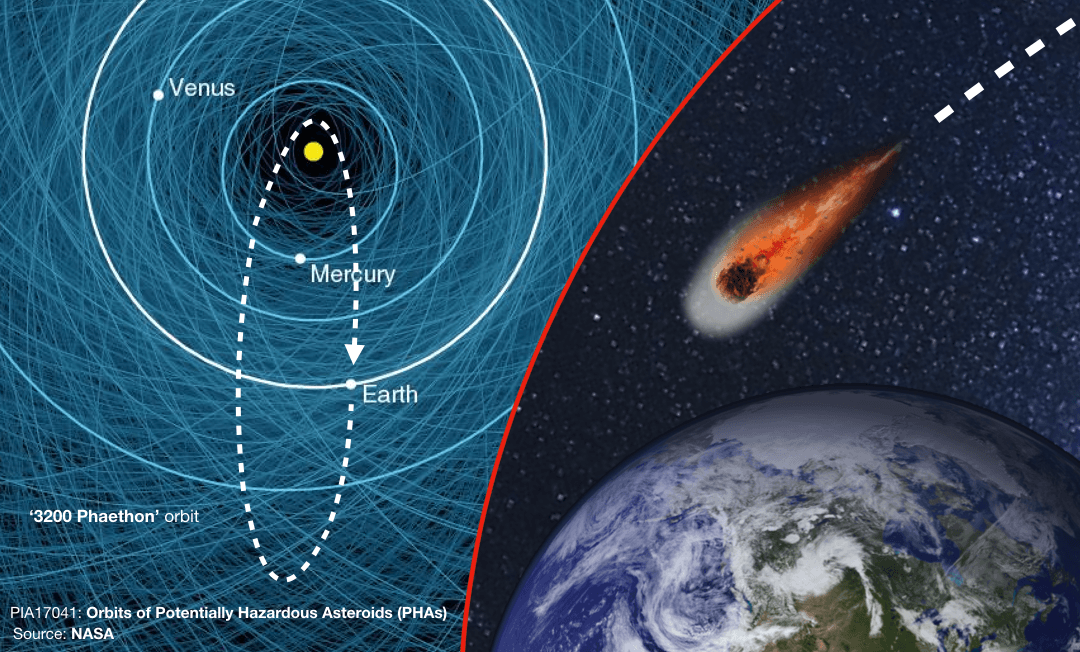A space object considered “potentially hazardous” by NASA, about half the size of the asteroid that allegedly wiped out the dinosaurs, is going to zoom past Earth tomorrow, Saturday, Dec. 16.
Named Phaethon after the Greek god who nearly destroyed the world, the giant rock careening through space is “a potentially hazardous asteroid whose path misses Earth’s orbit by only 2 million miles,” says NASA.





